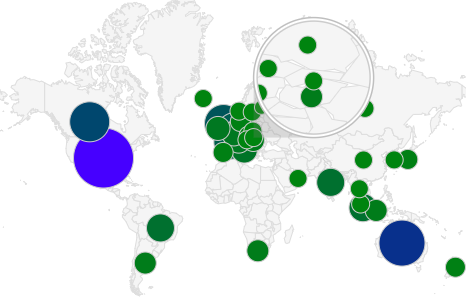Encryption converts data from plain readable form to ciphered text and it requires deciphering the same in order to turn it to accessible mode. Sending and accessing encoded email messages require both sender and recipient to share their digital ID (also known as public key certificate). This post includes information on
how to send an encrypted email via Outlook 2013 and lower versions.
Ciphering email messages prevents data from an unauthorized access. The technique turns data to inaccessible format and no alteration is thereby allowed through any invalid medium. Consequently, if in case it falls in the hands of unauthorized user; no modifications, additions, deletions or any other operation can be performed as the user will then require the decryption key to decode data.
Understanding Encryption Rules
For sending encrypted email messages, it is required that a digitally signed email message must be shared among sender and recipient that will allow each other to save their digital IDs to the Outlook Contacts folder. Without sharing digital IDs, it is not possible to share encrypted emails over MS Outlook.
Only recipient holding private key corresponding to the public key which is used to cipher the text can use it for deciphering the text for accessing it. Error message denying access to the encoded email message will appear if the recipient does not hold the private key.
Fundamentals of Signing Process
For assigning encryption, numeric value (also known as Checksum) corresponding to the set of bits in email message is calculated. Further, this numeric calculation needs to be enclosed by applying the same formula that is been used to cipher the message.
Checksum serves as the digital IDs or signatures, also known as digital certificate. Using digital key, these signatures are encrypted and then sends to the recipient address. The encrypted email message has three distinct components:
- Plain text
- Digital certificate; and
- Sender’s digital signature.
After receiving the email message, the recipient will check for the CRL i.e., Certificate Revocation List for analyzing if sender’s digital certificate has been withdrawn. If the signature exists on the CRL, the recipient will receive the warning message. If the digital signature does not exist on the CRL, the signature can then be decoded by using the sender’s public key which can be seen within digital certificate information.
Procedure to Encrypt Single Multiple Email Messages
When an encrypted email message is been sent via Outlook, the enclosed attachments will also get encrypted. Outlook provides a straight forward procedure to encrypt the email messages as and when required.
For MS Outlook 2013 2010
Encrypt Single Email Message
The necessity to encrypt single email message takes place when it requires sending or sharing some confidential message. Single email message can be encrypted using the following procedure:
1. In the email message window, click on ‘Options’.
2. In ‘More Options’ group, click on ‘Message Options’ dialog box.
3. In the then appeared ‘Properties’ window, click on ‘Security Settings’.
4. Further select the checkbox that says ‘Encrypt message contents and attachments’ and then click ‘OK’.
5. Compose the message and click on ‘Send’.
Encrypt All Outgoing Messages
For assigning default encryption on all email messages, the under mentioned procedure needs to be followed:
1. Click on the ‘File’ tab and click on ‘Options’.
2. In then appeared ‘Outlook Options’ window, click on ‘Trust Center’ and then click on the ‘Trust Center Settings’.
3. Under the ‘Encrypted email’ link available on the ‘Email Security’ tab; select the checkbox available with ‘Encrypt contents and attachments for outgoing messages’.
4. Further, click on ‘Settings’ if any of the assigned settings needs to be changed.
Note: It is required that all the recipients should have the sender’s digital ID for decrypting and reading the messages.
For MS Outlook 2007:
Encrypt Single Email Message1. In the email message window, go to the ‘Message’ tab and click on the sign available within ‘Options’ column.
2. ‘Message Options’ window will appear, click on the ‘Security Settings’.
4. ‘Security Properties’ window will appear, click on the checkbox available with ‘Encrypt message contents and attachments’ and then click on ‘OK’.
5. Compose the email message and click on the ‘Send’ button to send it.
Encrypt All Outgoing Message
1. Go to the ‘Tools’ menu and then click on ‘Trust Center’.
2. ‘Trust Center’ window will appear; click on ‘E-mail Security’.
3. Under ‘Encrypted e-mail’ section, click on the checkbox associated with ‘Encrypt contents and attachments for outgoing messages’.
4. For changing additional settings, click on the ‘Settings’ button.
5. In the then appeared ‘Change Security Settings’ window, provide appropriate settings as required.
6. Click on ‘OK’ button twice.
As a whole, it can be concluded that encryption is a powerful mechanism to safeguard email messages and other data from unauthorized access. At the same time, proper understanding over how to send an encrypted email via Outlook application is also required. In addition, the basic knowledge over deciphering data is mandatory as without decoding the message, it cannot be possible to access the same.
















